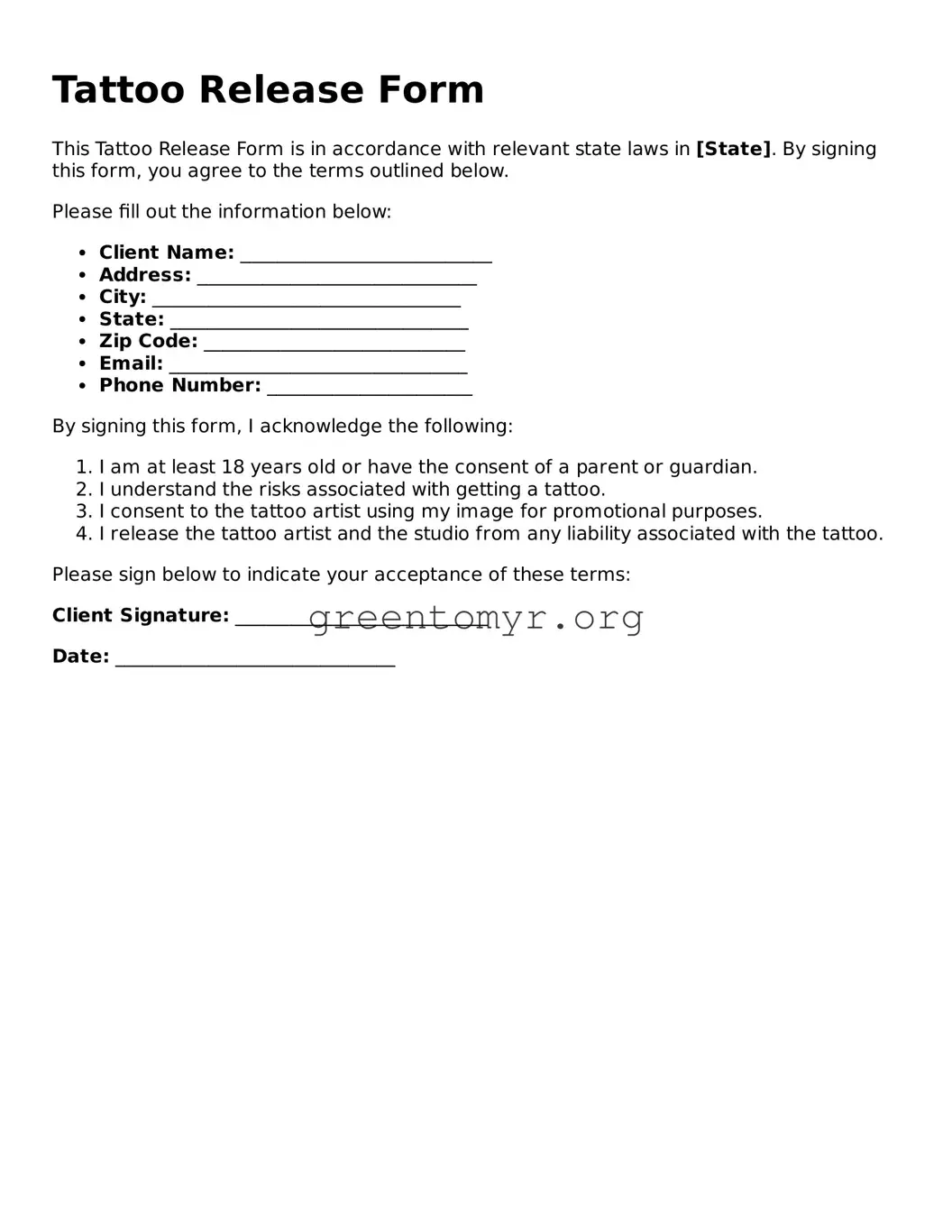Many people underestimate the importance of a Tattoo Release form, believing it to be a mere formality. However, completing this document correctly is essential to ensure the legal protection of both the tattoo artist and the client. Here are ten common mistakes individuals make when filling out this form.
First, some people forget to provide complete personal information. A missing address, phone number, or email can lead to communication issues later. It is crucial to ensure that all contact details are current and accurate so that everyone can stay informed about any developments.
Another common error is failing to read the terms thoroughly before signing. The language on the form is there for a reason; it outlines the rights and responsibilities of both parties. By skipping this step, individuals may inadvertently agree to terms they do not fully understand.
Moreover, individuals often neglect to specify the scope of the artwork. Tattoo artists need to know exactly what is being done and where. Whether it’s a small design or an intricate sleeve, clear communication helps manage expectations. Leaving this section vague can lead to misunderstandings or even disputes later.
It is also important to consider the date and time of the tattoo session. Many people skip this detail, but without it, both client and artist may find themselves confused about scheduling, which can be frustrating and lead to missed appointments.
Sometimes, clients do not include information about their health conditions. If there are any pre-existing conditions or allergies that may affect the tattoo process, they should be disclosed. Inadequate knowledge about a client's health can result in complications during or after the tattooing process.
Another mistake is failing to acknowledge aftercare instructions. Some forms might include reminders for aftercare, and neglecting to understand those guidelines can jeopardize the tattoo’s quality and increase the risk of infections. Proper aftercare is essential for healing.
Additionally, individuals sometimes forget to check if they are eligible for tattooing. Age restrictions apply in many states, and failing to show proper identification can delay the process. Clients should always have their ID ready to avoid unnecessary complications.
People also tend to overlook signature requirements. It may seem simple, but if a client fails to sign the form, it is invalid. Both the client and the artist need to sign it for the release to have legal standing. Skipping this step can nullify the entire agreement.
Lastly, some individuals might fill out the form in a hurry, resulting in scribbles or illegible handwriting. If the tattoo artist cannot read the information provided, it can lead to miscommunication. Clear, legible information is important for ensuring that everyone is on the same page.
By avoiding these common mistakes, individuals can help make the tattooing process smoother and ensure that everyone involved is protected legally. Taking the time to read the form carefully, provide accurate information, and ask questions will only serve to benefit the client and the tattoo artist in the long run.
